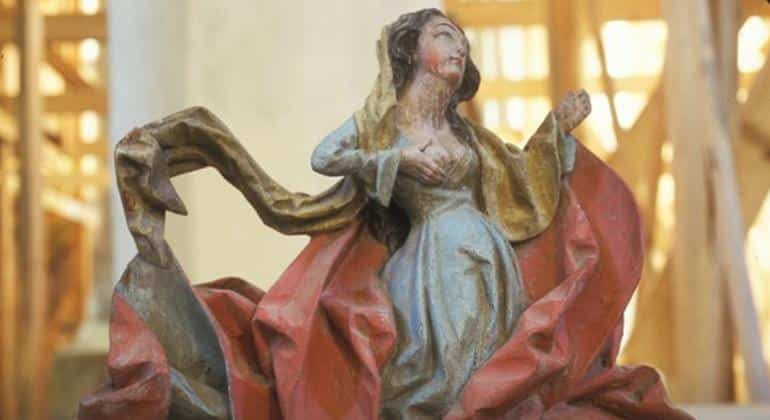Last year, a significant international intervention against the illicit trafficking of cultural goods took place, resulting in the seizure of over 37,000 objects ranging from archaeological artifacts to artworks, coins, and musical instruments. This action was carried out as part of Operation Pandora IX, which involved collaboration between Europol, Interpol, the World Customs Organization, as well as authorities from 23 countries, including Ukraine, Poland, Romania, Moldova, Serbia, Bulgaria, the Czech Republic, and the United States.
One of the most relevant findings occurred in Ukraine, where customs authorities intercepted the illegal export of 87 objects of historical value, including icons of St. Seraphim of Sarov and ancient coins, to Poland, Moldova, and Romania. In Spain, a group was discovered looting archaeological sites in Cáceres, using metal detectors to extract thousands of Roman coins that they sold through social networks. Likewise, in Greece, three individuals were arrested for attempting to sell five Byzantine icons for 70,000 euros. These incidents highlight the magnitude of the cultural goods trafficking and the need for more effective international cooperation to eradicate it.
The smuggling of cultural goods is one of the oldest and most profitable criminal activities, comparable to arms and drug trafficking. Unlike other forms of trafficking, the sale of cultural goods is not outright prohibited, which, combined with high demand and insufficient regulation, creates an enabling environment for criminals who take advantage of economic and political crises in various regions to expand their operations.
November 14 marks the International Day against Illicit Trafficking in Cultural Property, a date established by UNESCO to underscore the importance of protecting cultural heritage, considered part of our collective history. Krista Pikkat, UNESCO’s Director of Culture and Emergencies, emphasizes that the theft of cultural goods affects not only the cultural identity of communities but also their historical memory. Cultural sites in conflict areas are particularly vulnerable, exacerbating the activities of smugglers.
To raise public awareness about the importance of these objects and the need for their recovery, UNESCO has launched a virtual museum using 3D modeling and virtual reality to display digital replicas of stolen cultural goods. Each repatriated artifact represents a restored link to history, reaffirming that culture is a common heritage of humanity.
While intergovernmental cooperation has yielded results in the repatriation of cultural goods, there is still a long way to go in the fight against this trafficking. Authorities warn about the need for a multidisciplinary approach and the use of new technologies to effectively address this problem. It is also emphasized the importance of verifying the origin of cultural objects at the time of acquisition and being cautious when dealing with unknown sellers, stressing that the responsibility to protect these goods lies with society as a whole.
via: MiMub in Spanish
